Text


Finished my beloved Halibut Sweater!
This was amazing to knit and even more amazing to wear. The colorwork is spectacular to look at, this has hardly come off me since finishing it. Living my fisherman dream in this.
This was designed by Caitlin Hunter (cannot recommend the pattern enough) and I used the Fibrr Co.’s Lore (which I also can’t recommend enough despite the price)
#knitting#slow fashion#cottagecore#handmade#knitblr#fish#halibut#fisherman#caitlin hunter#gremlincore
128 notes
·
View notes
Text
The Queer Politics of Craftivism: Crafting Trans Joy Through Quilting
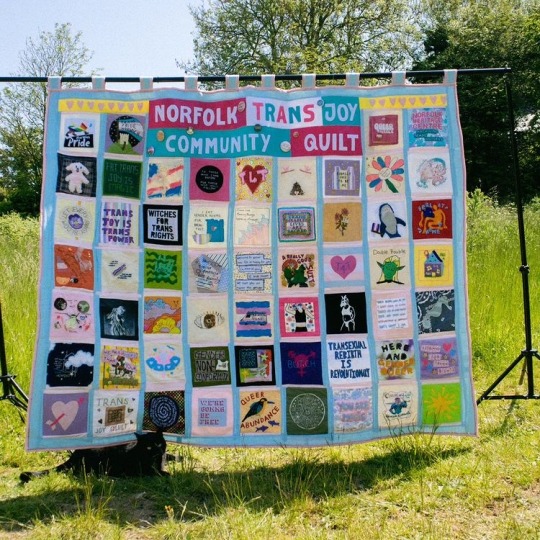

Right photo by @transjoyquilt, left by @poppythewitch (posted to @transjoyquilt) on IG
This essay was presented by me at a Queer conference at my University, and discusses queer craftivism in a historical context and contemporary one through the work of the Nortfolk Trans Joy Community Quilt. As a fiber artist, getting to talk with my professors and peers about craftivism was a big honor. It also couldn't be done without the publisher of The Norfolk Trans Joy Community Quilt Zine, Common Threads Press. Living in the US and on a time crunch they sent me a digital copy. All references are at the end of the essay, which I absolutely recommend reading, but I'd totally be willing to post other great resources that didn't make it into the final draft but are great works on queer craftivism.
The Queer Politics of Craftivism: Crafting Trans Joy Through Quilting
“Craftivism,” a term popularized by activist and writer Betsy Greer, is the intersection of “crafting” and “activism.” Trans and queer activists have adopted the term to craft materials to express queer joy and resilient community in the face of abandonment and oppression by the state. Craftivism, while certainly involving anger, centers joy and love for the self and community. One of the most famous queer craftivist projects is the NAMES Project AIDS Memorial Quilt created in 1987 which memorialized thousands of people who died from AIDS and offered a way for the queer community to mourn. In this paper, I want to look at the Norfolk Trans Joy Community quilt to offer a more recent example of craftism that continues the political legacy of the AIDS Memorial Quilt. The Norfolk Trans Joy Community quilt was created earlier this year by trans people and allies in Norwich, England to offer trans people community and to highlight trans joy in a society that is continually working to criminalize the trans body.
Craftivism has existed long before Betsy Greer popularized the name, and its influence reaches outside of queer circles, however one of the most notable works of craftivism is the NAMES Project AIDS Memorial Quilt. The government response to the AIDS crisis early in the epidemic was incredibly flawed and lacking with Ronald Reagan’s administration staying almost completely silent on AIDS until 1987 their only comments minimizing the scope of the epidemic on the queer community (Oritz 85). Reagan’s administration abandoned queer people to fend for themselves during the AIDS epidemic, needlessly allowing for thousands of people to die. The NAMES Project AIDS Memorial Quilt, created in 1987, was crafted in protest to the government’s abandonment of queer people and to mourn as a community. The quilt initially consisted of 1,920 squares, each memorializing a person who died of AIDS, made by themselves or those who loved them (“The History of the Quilt”). Cleve Jones, the man who conceived the quilt, hoped that it would serve as a communal form of healing in dealing with the great loss the community was feeling, but also to publicly shame the government for their apathy and failure towards the queer community (“AIDS Memorial Quilt”). People combined their anger towards the governent and love and sadness towards losing someone close to them and channeled it into a quilt showcasing their emotions. Scholar Daniel Fountain writes in their essay “‘Queer Quilts’: A Patchworked History,” “Although the blocks can be exhibited independently of one another, the idea is that each panel – each life– would never be isolated or alone, even in death” (qtd in “The Norfolk Trans Joy Community Quilt Zine” 7). The AIDS quilt simultaneously allowed queer people to come together as a community and mourn those they had lost, while also spotlighting the fact that the government did not acknowledge the scope of the epidemic.
The conventional definition of “crafting” is gendered as one that is feminine and therefore “lower.” Art forms of knitting, embroidery, quilting, etc., come to mind over the more “masculine” and therefore more legitimate mediums of writing, painting, etc,. Associations with craft and queerness are tied, that they’re both too feminine and not as legitimate than their more recognized counterparts. Artist Ben Cuevas writes of their personal connection to the link of crafting and queerness stating, “by knitting with my male body, and referencing that in my work, I’m queering gendered constructs of craft,” (qtd in Chaich & Oldham 137). Queer people recognize the connection between the connotations of queerness and craft, and use it to materially render queer and trans experiences, including expressing joy and love for their community.
Crafting, specifically quilting, is used to express queer joy due to the symbolic nature of quilts, and what the gift of a quilt means. The gift of a quilt tells someone that they love and care for them, that in a literal sense you never want them to be cold and alone. Quilting teacher and writer Thomas Knauer in his essay “The Gift of a Quilt is an Act of Love” writes of the symbolism present in giving quilts, “warmth — once a literal protection against the elements — is also a symbolic means of protection, and our desire to protect is a reflection of the love we feel for another.” People make quilts to express love. Furthermore, the gift of a quilt involves incredible amounts of patience and care. Quilts are not really practical as people in modern life have access to cheaper ready-made blankets, yet people spend weeks and months picking out fabric, and cutting and sewing them for another person to show their love. The Norfolk Trans Joy Community Quilt does this for an entire community of people. Individual squares are sewn together to become an entire quilt of trans people expressing their love for themselves and their community, that they do not want themselves or any trans person to be without joy or community.
Queer craftivism subverts the idea of quilting as a symbol of cis-heteronormativity, instead making it a symbol of community. In their essay “‘Queer Quilts’: A Patchworked History,” Daniel Fountain writes of gendered associations of quilts, saying, “quilts are still largely associated with milestones in cis-heteronormative culture – birth, marriage, and death – and they are typically passed down through generations of biological family members, usually through matrilineality.” (Norfolk Trans Joy Community Quilt Zine 6). However in queer crafting, instead of marriage and family as the sole climactic moment in a person’s life worthy of a quilt, it is the moment in which a person expresses joy in being trans and queer that is worthy of a quilt. Community becomes family, which is important when many trans folks are shunned by their families and the matrilineal line is broken or strained.
Trans joy is important now more than ever in a world that is increasingly criminalizing the trans body. The media has increasingly portrayed trans people as predators and dangerous, with CPAC speaker Michael Knowles stating earlier this year that “transgenderism must be eradicated from public life entirely,” (qtd in Wade & Reis). Despite the onslaught of cruelty thrown at trans people, craftivism is used a means to express joy and challenge the narratives against them. K, who created a square for the community quilt and was interviewed about it said, “As much as I want to express my anger, trans joy is defiant. It can’t be legislated out of existence, defanged or sold. It doesn’t have one look and it contradicts itself. Its complexity is powerful, trans joy is a protest in itself” (Norfolk Trans Joy Community Quilt Zine 21). Anger is not absent in craftivism, as it is a response to injustice and abandonment of marginalized groups which rightfully sparks outrage, yet joy is present in them as well, which is an important mode of protest against oppression. In other words, joy and anger are not mutually exclusive categories.
Even when not being portrayed as dangerous, mainstream trans narratives are often filled with the trauma associated with being trans such as the violence inflicted on them, suicide, and survival sex work to name a few. While these are all real issues affecting the trans community, hyperfocusing on these issues in the media creates a false narrative that trans people are joyless, which the Trans Community Quilt hopes to reject. Alex, another person who contributed to the quilt and was interviewed said, “It helps to combat the tragedy of trans lives in lots of mainstream media, even in sympathetic cases.” (The Norfolk Trans Joy Community Quilt Zine 18). Instead of fetishizing trans folks through the lens of traumatic tragedy, the quilt highlights the joy in being transgender. K’s square features a pun which says “Orange you glad trans people exist?” Another square made by a person named Josh is an embroidered rendering of Josh’s chest nine months post top surgery. The quilt rejects the narrative that trans people are dangerous and tragic, but rather spotlighting the joy for self and community in being transgender. The focus on joy is not at the expense of histories of pain or struggle.
The creation of the Trans Community quilt was largely community focused, with recurring workshops for queer community members to gather and create. Workshops included free materials and instruction for creating the squares in addition to providing a safe community space for community members. Therefore the quilt was truly made by the trans community of Norwich, and even after its creation the quilt will go on to be exhibited at various queer and trans events across England. The conceptors Beau Brannick and Alice Bigsby-Bye write, “The project aims to return ownership of queer collections to their communities and empower people to access, discover, and contribute to the objects that reflect their shared histories” (5). The quilt is also therefore owned by the queer and trans community in addition to being made by and for the community.
Craftivism has existed for a long time, with a notable queer example being the NAMES Project AIDS Memorial Quilt, and these kinds of projects have gone onto inspire others such as the Norfolk Trans Joy Community Quilt. The Trans Joy Quilt centers trans joy and community rather than suffering. This research as well as the work being done by queer and trans craftivists is important because activism that centers joy and resilient community is needed more than ever in a society that is working to criminalize the trans body.
Works Cited
“AIDS Memorial Quilt,” Williams College Museum of Art, March 17, 2019, https://artmuseum.williams.edu/aids-memorial-quilt/
Chaich, John & Oldham, Todd, Queer Threads: Crafting Identity & Community, AMMO Books, 2017.
Knauer, Thomas. “The Gift of a Quilt is an Act of Love,” Hachette Book Group, https://www.hachettebookgroup.com/storey/gift-quilt-act-love/#:~:text=the%20room%20symbolically.-,The%20gift%20of%20a%20quilt%20is%20an%20act%20of%20love,those%20they%20are%20given%20to
“The History of the Quilt,” National AIDS Memorial, https://www.aidsmemorial.org/quilt-history
The Norfolk Trans Joy Community Quilt Zine, Common Threads Press, 2023.
Ortiz, Jacqueline A. (2023) "Silence From the Great Communicator: The Early Years of the AIDS Epidemic Under the Reagan Administration," Swarthmore Undergraduate History Journal: 4 (2), 76-99. https://works.swarthmore.edu/suhj/vol4/iss2/6
Wade, Peter & Reis, Patrick. “CPAC Speaker Calls for Eradication of ‘Transgenderism’ — and Somehow Claims He’s Not Calling for Elimination of Transgender People.” Rolling Stone, March 6, 2023, https://www.rollingstone.com/politics/politics-news/cpac-speaker-transgender-people-eradicated-1234690924/
12 notes
·
View notes
Text
Displaced grandmother making clothes for children
10K notes
·
View notes
Text

Finally finished the beautiful Midnight Hare gloves by HattieKerrs on Ravelry! These are by far the most beautiful thing I’ve ever knit, they look like something out of a Jan Brett picture book. They’re going to my mom for Christmas, who will give them the love they deserve.
The brown yarn comes from an alpaca farm in my area as well! Can’t recommend the pattern enough, these were a joy to knit!
#knitting#slow fashion#cottagecore#autumn#handmade#knitblr#cottagecoreknitting#winter#jan brett#gift knitting#my knitting
417 notes
·
View notes
Text
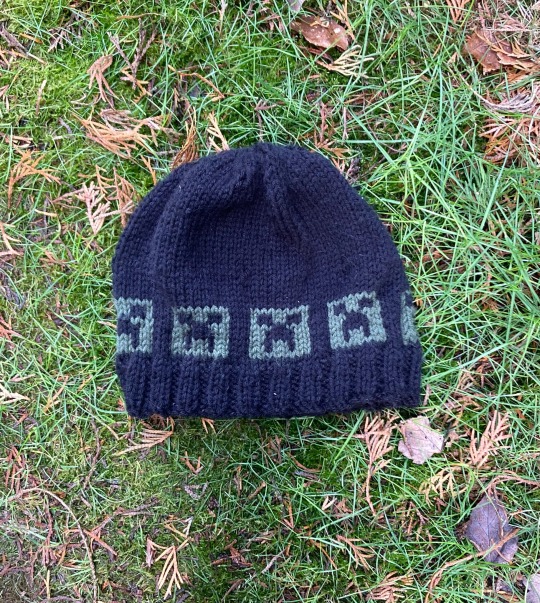
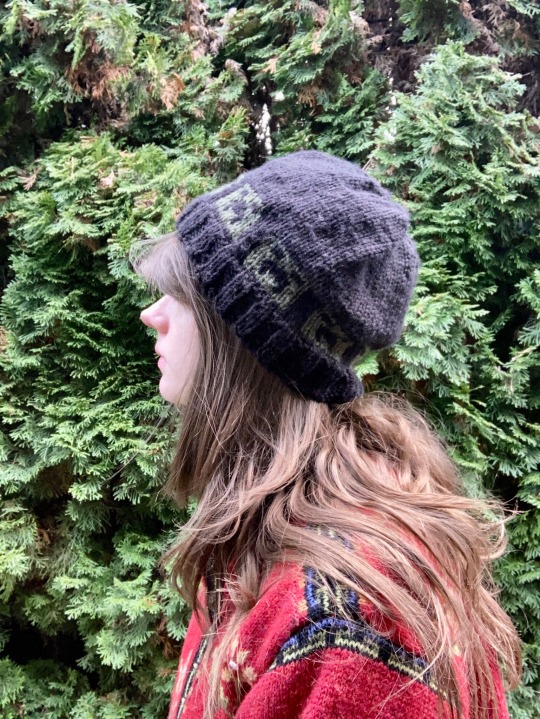
Forgot to post something I made months ago! This is a knit minecraft creeper beanie made for the lovey @low-functioning-young-adult for her 20th birthday!!! Very proud of this one, and according to her it gets compliments all the time
51 notes
·
View notes
Text
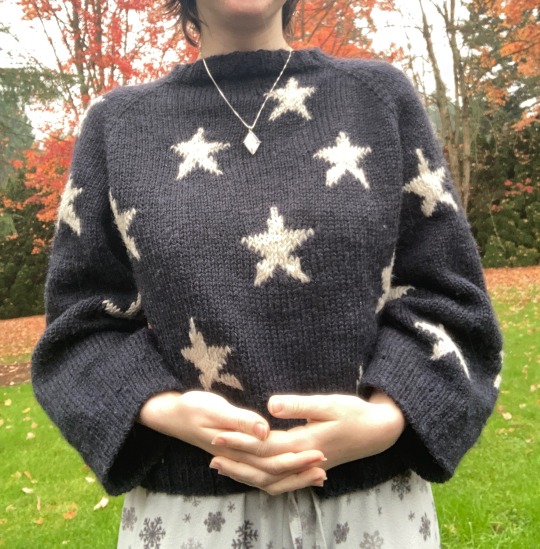

Finished my Coraline sweater! Thought this up when I was shopping for yarn in Osaka. It was made with British Eroika, bought from said shop in Osaka, Japan. I used Made By Florence’s free jumper pattern (which I cannot recommend enough) and intarsia knit the stars on which was a challenge to figure out the tension.
#coraline#knitting#slow fashion#cottagecore#autumn#handmade#Coraline knitting#halloween#knitblr#japan#osaka#Japan knitting#my knits
633 notes
·
View notes
Text

Fish art ❤️ 🐟
5K notes
·
View notes
Text
Destroy the myth that libraries are no longer relevant. If you use your library, please reblog.
151K notes
·
View notes
Text

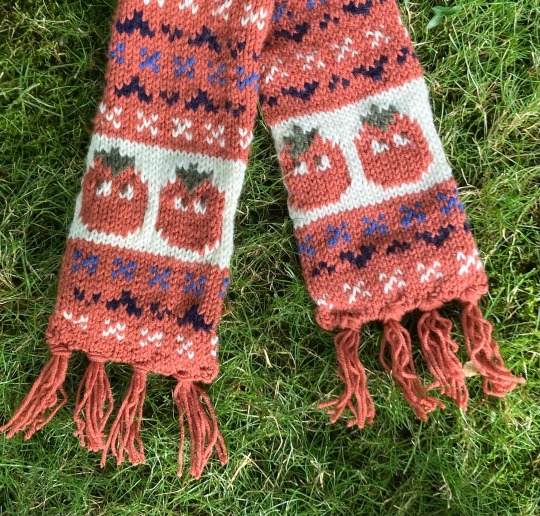
A silly little tomato scarf I made for my friend @havkfraud
I have a lot of love for this project as it’s for a friend and I entered it into the county fair!
This scarf was based off a pin my friend sent me, I couldn’t find the original pin or where the garment came from, I only have the screenshot:
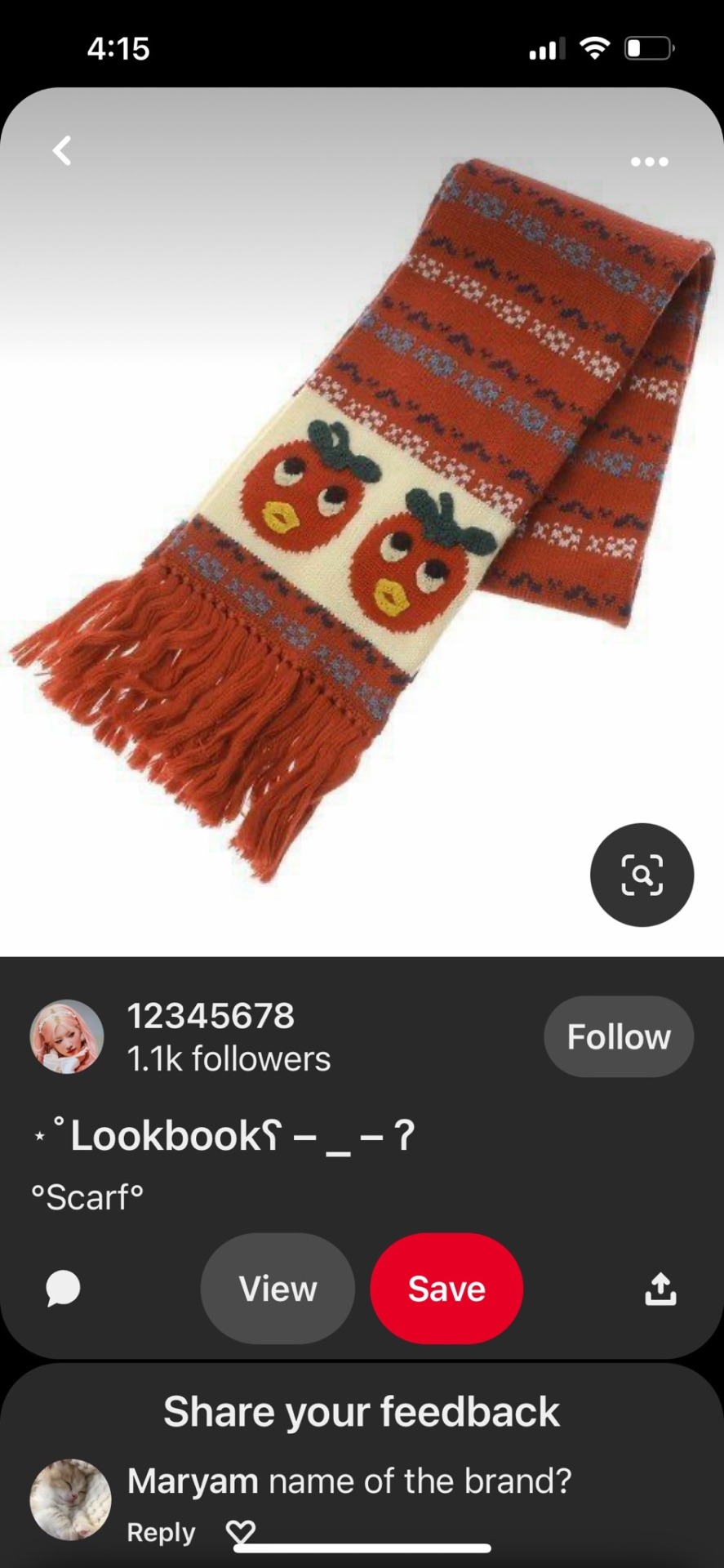
38 notes
·
View notes
Text

A turnip hat, fresh off the needles. Absolutely in love with how this turned out!
Edit: I forgot to mention that this was inspired by the Rad Radish socks by Stone Knits on Ravelry!
The link can be found here: https://www.ravelry.com/patterns/library/rad-radish-socks
257 notes
·
View notes
Text


Reminder to enter your hobbies into the county fair!!! Get that ribbon and an ego boost!
#I don’t know why they hung my cape like that#county fair#knitting#slow fashion#cottagecore#cottagecoreknitting#slow living#knit scarf#Victorian#history bounding#crafting#creative inspiration#my knits
10 notes
·
View notes
Text


Knitting in Victorian England
I wrote this for a class on Victorian Literature because my professor let me research knittinf and make a cape instead of writing a literary analysis paper. The cape that is discussed from The Art of Knitting is what I created for this project, with the illustration from the book on the top right and the cape I knit on the left. The book is from 1892 and is free on Internet Archive, and Engineering Knits on YouTube made a wonderful video about it. (More photos of the cape at the end!)
Knitting experienced a surge of popularity in Victorian England, and was even a topic of discussion in Charlotte Bronte’s Jane Eyre. After gaining popularity due to industrialization, knitting became a common pastime for women. Knitting was important because it existed as a way for Victorian women of all classes to be seen as virtuous and gave them the look of domesticity, while additionally functioning as a means of income for working-class women by either knitting or writing about knitting.
Industrialization shifted the view of knitting from economic necessity to a fashionable pastime for gentry women. In 1589 the first mechanical knitting machine was invented in Nottingham, which industrialized the knitting industry (“The History of Hand-Knitting"). Dyed wool trade with Germany and the subsequent booming industry of knitting pattern books turned knitting into something more accessible and artistic than solely practical (Rutt 112). Knitting became popular and fashionable for gentry women around 1835 (Rutt 111). Women of all classes have knitted long before the Victorian period, but the industrial changes shifted knitting to a popular and fashionable pastime for gentry women, in addition to the economic necessity for working-class women.
Knitting served as a way to keep women wholesomely busy. In The Art of Knitting, a quote from the beginning by Richter reads “A letter or a book distracts a woman more than four pair of stockings knit by herself” (qtd in The Art of Knitting 2). Knitting kept women busy without opening them up to new ideas that came from letters and books. Furthermore, a writer in The Magazine of Domestic Economy writes how useless the items (upper-class) women made were, but praises knitting in its effort “to rid of those hours which, but for their aid, might not be so innocently disposed of” (qtd in Rutt 112). Concentrating on knitting produces something at the end of the hours of challenging work but does not expose women to any material that the Victorians would deem dangerous or immoral. Thus, even when women made something useless, they were keeping themselves busy in a virtuous way.
Knitting also gave women the feminine and domestic look that was expected of them in the Victorian era. This can be seen in Jane Eyre with Jane’s description of Mrs. Fairfax upon their meeting. Jane thinks, “[Mrs. Fairfax] was occupied in knitting; a large cat sat demurely at her feet; nothing in short was wanting to complete the beau-ideal of domestic comfort” (Bronte 145). This is the first time the reader sees Mrs. Fairfax, surrounded by a warm fire, a cat and engaged in a feminine pastime. She is the image of domesticity. Jane admires Mrs. Fairfax, in part, for the comfort her nature, including knitting, brings. Mrs. Fairfax shows the role knitting plays into the idea of women as domestic creatures.
Certain forms of knitting made women appear elegant. Frances Lambert, author of 1842 manual The Handbook of Needlework, advises women to knit using the common Dutch knitting method, in which the yarn is held over the fingers of the left hand and the needles pointed upwards, because it was seen as a more elegant style of knitting (Rutt 113). While Rutt notes that this method was a faster way of knitting, Lambert does not comment on this, but instead focuses on its aesthetic qualities. This style of knitting was popular because it allowed for the look of style that was mandatory in women’s lives.
While gentry women were often restricted to making less practical knit items, some knitting authors disparaged this for frivolity and immorality. Working-class women did not have this criticism as the things they made were out of practicality and meant for regular use. In picking yarn color and material, Mlle Riego de la Branchardiere, author of Ladies Handbook of Knitting, Netting and Crochet writes “...and let her be careful to make all she does a sacrifice acceptable to her God” (qtd in Rutt 116). Rutt asserts that although Victorian knitting is seen as producing useless knits, some authors disparaged this (117). They instead encouraged women to focus on what they saw as the spiritual aspects rather than on aesthetics, as everything women did, including knitting, should enhance their virtue.
While knitting was popular as a pastime, it was still used out of economic need and served as a way for working-class women to earn money. Knitting was taught in orphanages and poor houses, with the first knitting school opened in Lincoln, Leicester, and York in the late 1500s. One school in Yorkshire was established for boys and girls who were “not in affluence” (“The History of Hand-Knitting"). The first knitting book, titled The National Society's Instructions on Needlework and Knitting, published in 1838, was an instructional manual for teachers to teach poor students the art of knitting and needlework. Knitting was used as a personal hobby, but also as a way for working-class people to support themselves.
The importance of knitting to working-class women can be seen in Jane Eyre. St John tells Jane, “It is a village school: your scholars will be only poor girls—cottagers’ children—at the best, farmers’ daughters. Knitting, sewing, reading, writing, ciphering, will be all you will have to teach” (Bronte 541). Knitting will be a way for these young girls to get jobs and to be able to make clothes for themselves and their families. In this way, knitting was more than a fashionable and artistic hobby, but a necessity for many working-class women.
In addition to manufacturing knitwear, women were able to make substantial livings writing about knitting. There was a boom in knitting and needlework publications during the 19th century (“The History of Hand-Knitting"). Some, such as The Art of Knitting, were published directly by publishers with no one associated author. Others were authored by women and were immensely successful. Cornelia Mee, who published shorter pamphlet-type knitting books, sold over 300,000 copies during their run in print (Rutt 115). Francis Lambert, author of two editions of My Knitting Book, sold a combined 65,000 copies and was translated into several languages across Europe (Rutt 113). Knitting gave working-class women opportunities to earn money, whether it was making knitwear or writing about knitting.
Knitting manuals contained various topics, such as some focusing on the religious and virtuous aspects of knitting as discussed previously, but most, if not all, had patterns in them. Under the chapter “Hoods, Capes, Shawls, Jackets, Fascinators, Petticoats, Leggings, Slippers, etc., etc.” in The Art of Knitting there is a pattern to knit a cape. Victorian knitting patterns tended to be broad and vague. Today's patterns are quite concerned with needle size and gauge, unlike many Victorian patterns. For instance, the cape pattern instructs the reader to “use quite coarse needles and work rather loosely,” (60).
Knitting was an important skill for women in the Victorian era, and they knit for a multitude of reasons. Knitting gave women the look of virtue, elegance, and domesticity. Working-class women used their knitting skills to support themselves and their families through making knitwear or writing about knitting.
Sources:
The Art of Knitting. The Butterick Publishing Co. 1892. https://archive.org/details/artofknitting00butt/page/60/mode/2up?ref=ol&vi ew=theater
Bronte, Charlotte. Jane Eyre. Planet eBooks. 1847.
“The History of Hand-Knitting" Victoria and Albert Museum.
Rutt, Richard. A History of Hand Knitting. Interweave Press. 1987. https://archive.org/details/historyofhandkni0000rutt/page/n7/mode/2up?vie w=theater


#knitting#historical knitting#history bounding#Victorian knitting#knitting history#cottagecore#victorian#knit cape#gothic#slow fashion#handmade#my knits
163 notes
·
View notes
Text
The spiritual power of knitting is not to be underestimated
in your 20s you must rediscover the joys of arts and crafts to stave off spiritual decay
120K notes
·
View notes
Text
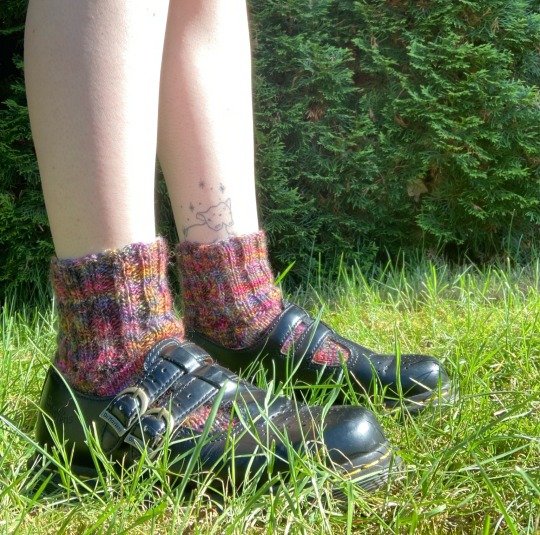

A pair of socks I knit! I got the yarn from one of my grandma’s friends. They look great with the mary janes and my cow tattoo.
#knitting#sock knitting#slow fashion#mary janes#two headed calf#laura gilpin#cottagecore#cottagecoreknitting#doc martens#my knits
91 notes
·
View notes
Text

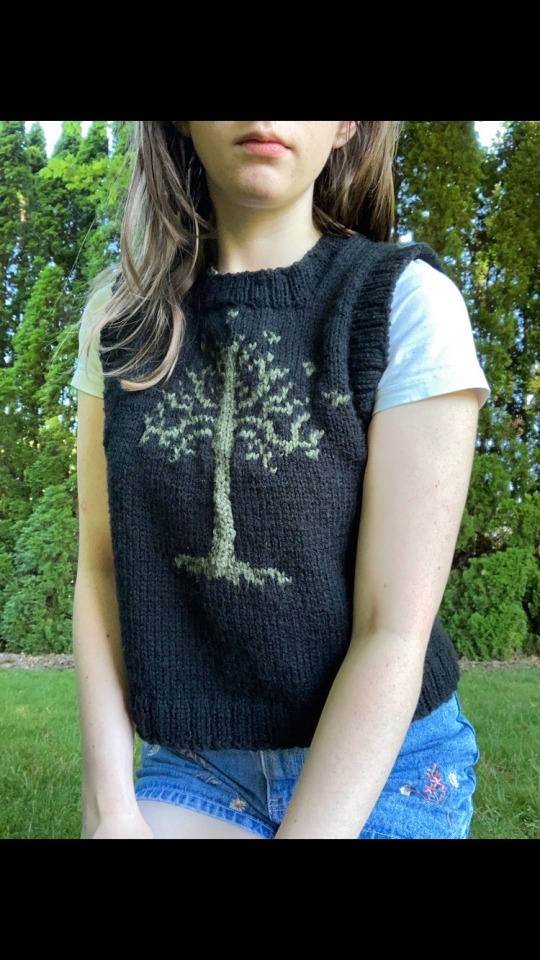
A Lord of the Rings sweater vest that I am quite proud of. It’s perfect for working in the summer!
#lotr#lord of the rings#hobbitcore#cottagecoreknitting#knitting#cottagecore#slow fashion#treeofgondor#my knits
224 notes
·
View notes
